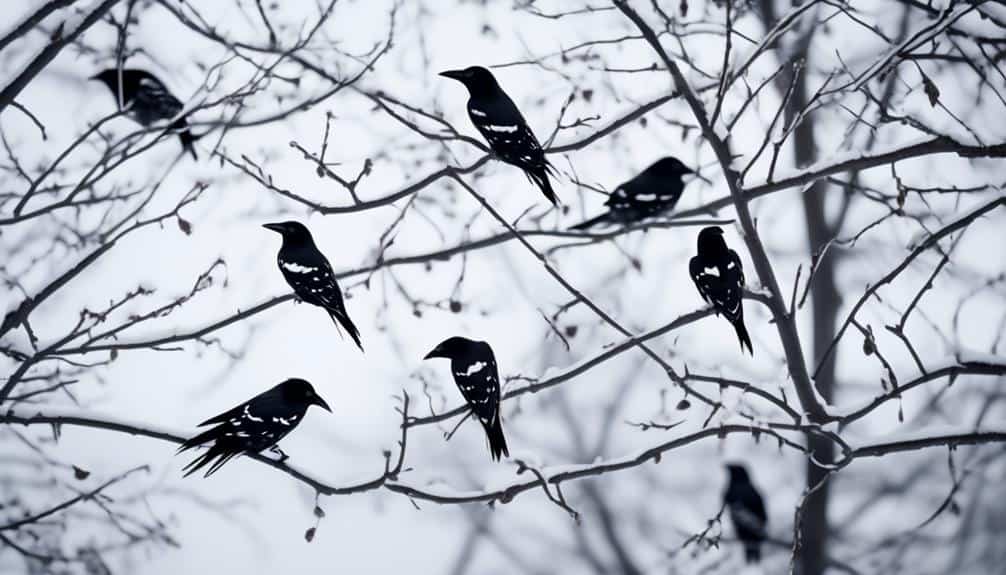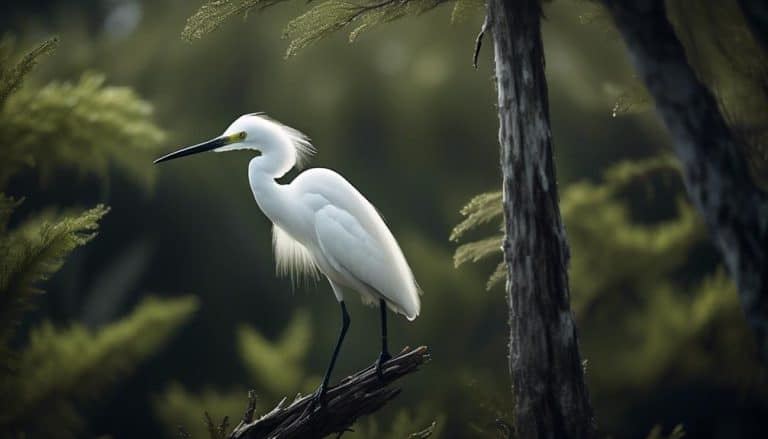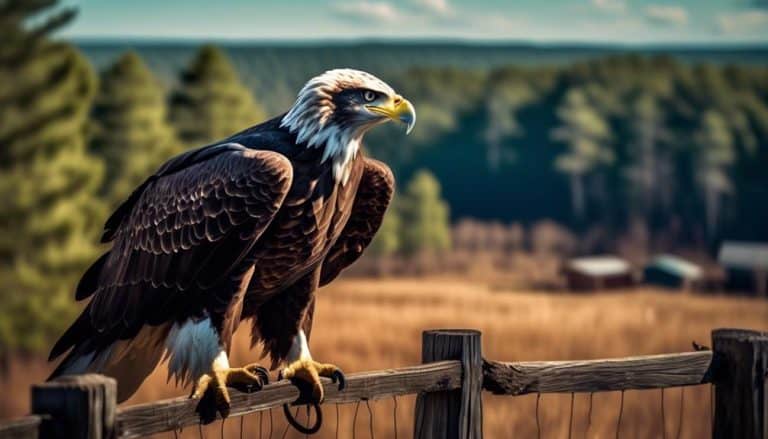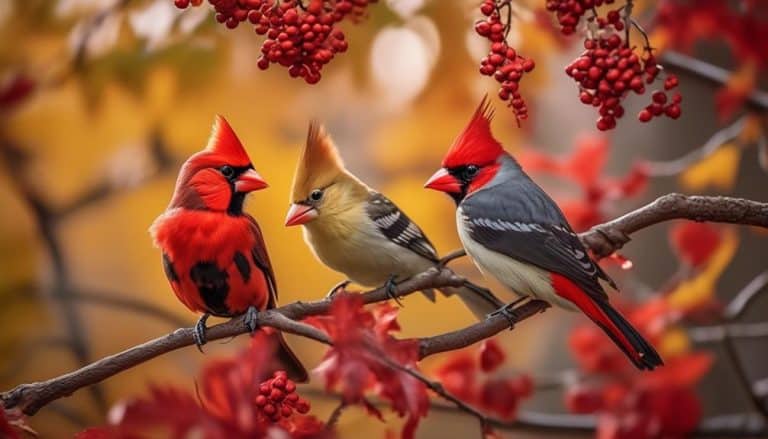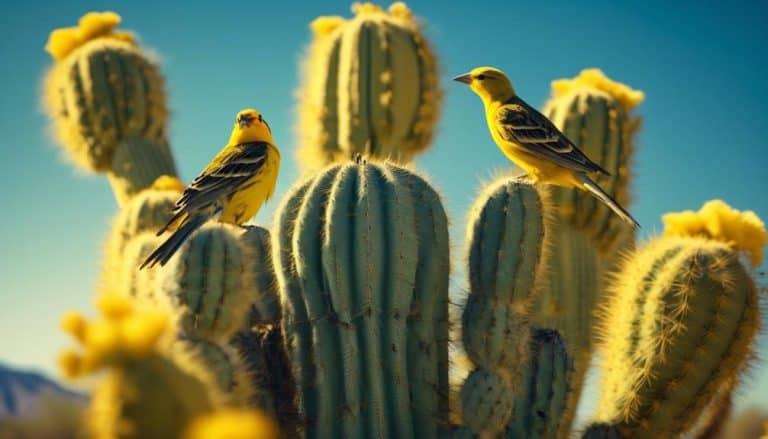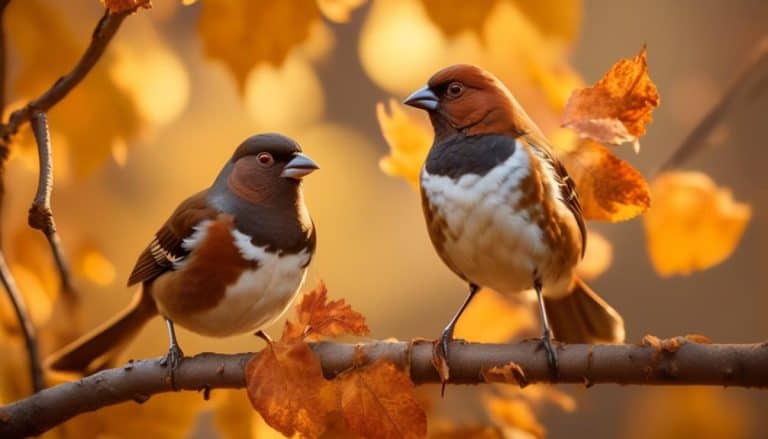As I traverse the lush landscapes of Michigan, I am captivated by the striking contrast of black and white birds that grace the skies.
These avian creatures, with their monochromatic plumage, possess a truly captivating elegance and charm.
From the sleek and agile Eastern Kingbird to the small yet mighty Downy Woodpecker, Michigan boasts an array of black and white feathered wonders.
Black and white birds in Michigan, such as the Black-capped Chickadee and the Downy Woodpecker, play a crucial role in the ecosystem by controlling pests and contributing to seed dispersal. However, they face threats from predators like hawks, owls, and cats, impacting the overall ecosystem balance. Conservation efforts are in place to protect these birds, focusing on increasing their population size and preserving habitats.
Join me on a journey as we explore these remarkable creatures’ unique characteristics and fascinating behaviors and discover why they continue to enchant bird enthusiasts and nature lovers alike.
Eastern Kingbird: Michigan’s Elegant Flycatcher

The Eastern Kingbird, a striking and graceful bird, is Michigan’s elegant flycatcher, showcasing its exceptional aerial hunting skills and distinctive appearance. The Eastern Kingbird is easily recognizable with its black head, white underparts, and black tail with a white terminal band.
During the breeding season, these birds engage in elaborate courtship displays to attract mates. Males perform aerial acrobatics, such as diving and swooping, while emitting high-pitched calls to impress females. Once a pair is formed, they build their nest using twigs, grass, and other plant materials, usually in a tree or shrub. The nest is meticulously constructed and lined with softer materials like feathers and plant fibers.
Eastern Kingbirds are known for aggressively defending their nesting territory, often chasing away larger birds and even mammals that venture too close. The female lays a clutch of 2-4 eggs, which both parents take turns incubating for about two weeks. After hatching, the parents tirelessly feed their chicks with insects. The young birds fledge after about two weeks and soon become independent.
The Eastern Kingbird’s mating behavior and nesting habits highlight its dedication to reproductive success and the survival of its offspring.
Black-capped Chickadee: The Iconic Songbird of Michigan
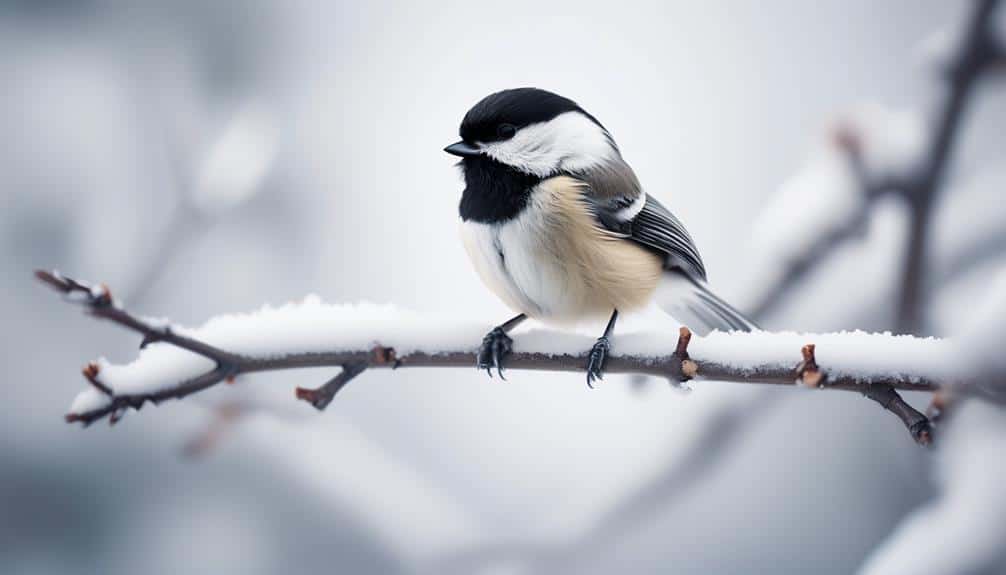
Having explored the elegant flycatching abilities and reproductive dedication of the Eastern Kingbird, we now focus on the iconic songbird of Michigan, the Black-capped Chickadee. Michigan’s black-capped chickadee, a small but charismatic bird, symbolizes the state’s diverse birdlife. Here are three fascinating aspects of this beloved species:
- Vocal Abilities: The Black-capped Chickadee is renowned for its distinctive song, a clear and melodious ‘chick-a-dee-dee-dee.’ This vocalization serves various purposes, including mate attraction, territory defense, and communication within the flock. Its repertoire also includes a range of calls and vocalizations that convey different messages to other birds.
- Intelligent Behavior: Despite its small size, the Black-capped Chickadee exhibits remarkable intelligence. It has been observed to cache food, such as seeds and insects, in various locations, creating a mental map to retrieve these hidden reserves later. This behavior showcases their problem-solving skills and ability to plan for the future.
- Adaptability: The Black-capped Chickadee is highly adaptable and can thrive in various habitats, including forests, woodlands, and suburban areas. It readily visits bird feeders, delighting birdwatchers with its acrobatic moves and bold nature. Its ability to adjust to different environments has contributed to its widespread presence throughout Michigan.
Michigan’s black-capped chickadee isn’t only a delight to observe and a reminder of the state’s rich avian biodiversity. Its vocal prowess, intelligence, and adaptability make it a remarkable species deserving of our appreciation and conservation efforts.
American Oystercatcher: Michigan’s Coastal Beauty
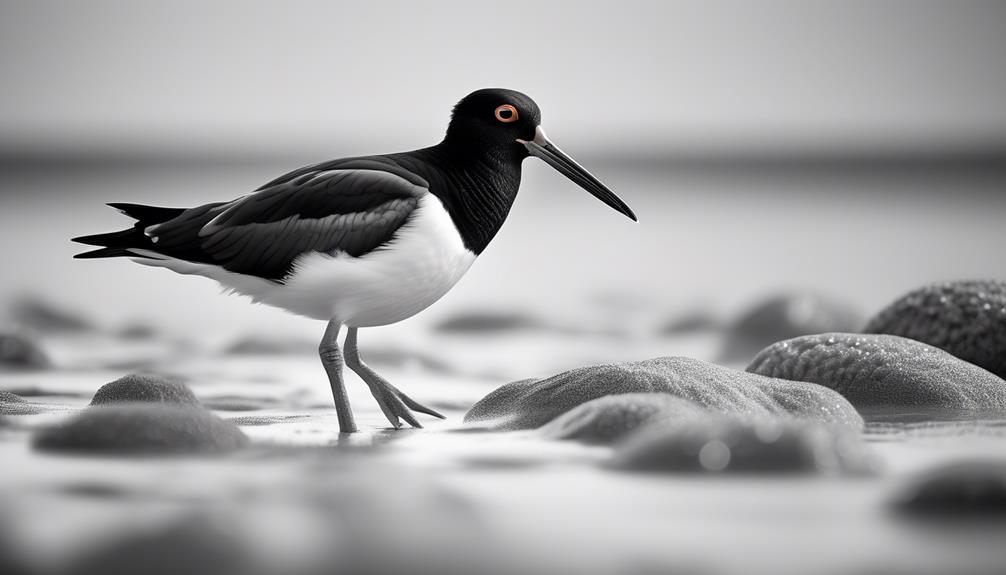
What unique characteristics and behaviors define the American Oystercatcher, a coastal beauty found in Michigan? The American Oystercatcher (Haematopus palliatus) is a striking bird with distinct features that make it easily recognizable. Its long, bright orange bill, black and white plumage, and pink legs stand out against Michigan’s coastline’s sandy beaches and rocky shores. This species is known for its bold and noisy behavior, often seen probing the sand for its preferred food source, bivalves such as clams and oysters.
The American Oystercatcher is a monogamous bird, forming long-term pair bonds with their mates. During courtship, they engage in elaborate displays, including aerial acrobatics and mutual preening. These mating rituals are crucial in strengthening the bond between the pair and ensuring successful reproduction.
Conservation efforts have been put in place to protect the American Oystercatcher and its coastal habitat in Michigan. The presence of human activity, such as beach development and disturbance, poses a threat to these birds. Additionally, the degradation of their preferred feeding grounds due to pollution and overfishing can impact their survival. To mitigate these risks, conservation organizations educate the public about preserving coastal ecosystems and implementing measures to reduce human disturbance in critical nesting areas.
In conclusion, the American Oystercatcher is a captivating coastal beauty in Michigan. With its unique characteristics and fascinating behaviors, this bird adds to the rich biodiversity of the state’s coastal habitats. Efforts to protect and conserve these birds and their habitat are essential for their continued presence in Michigan’s coastal areas.
| Unique Characteristics | Behaviors |
|---|---|
| Bright orange bill | Probing sand for bivalves |
| Black and white plumage | Elaborate courtship displays |
| Pink legs | Aerial acrobatics |
| Monogamous breeding behavior | Mutual preening |
Pileated Woodpecker: Michigan’s Black and White Woodland Giant
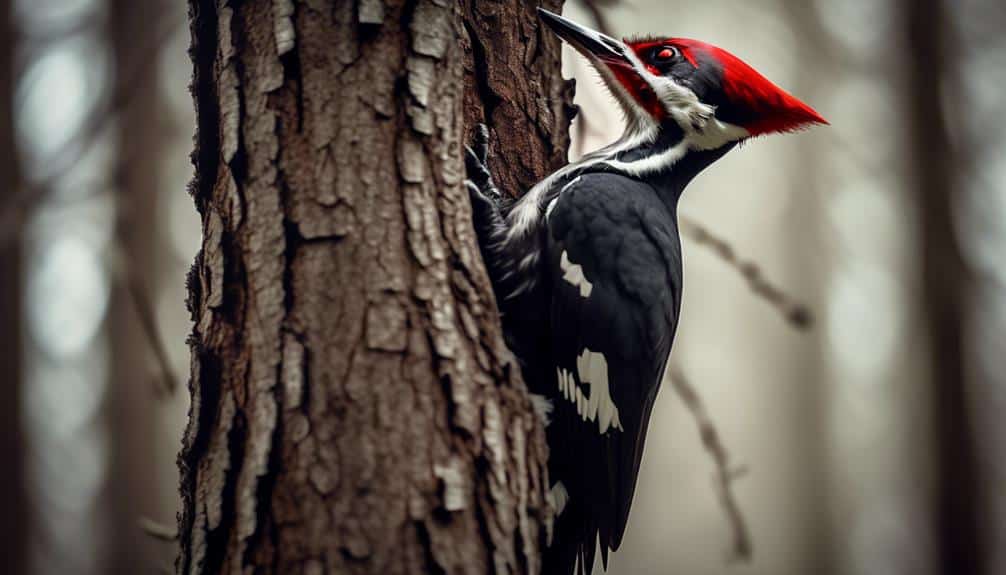
Spotting the Pileated Woodpecker in Michigan’s woodlands is a thrilling experience as this black and white giant gracefully navigates the trees in search of its next meal. Here are three fascinating facts about Michigan’s largest woodpecker, the pileated woodpecker:
- Size: The pileated woodpecker is an impressive bird, measuring around 16-19 inches long and weighing 9-14 ounces. Its wingspan can reach up to 26 inches, allowing for powerful and agile flight.
- Appearance: This woodland giant is easily recognizable by its striking black and white plumage. Its body is mostly black, while its head is adorned with a vibrant red crest. The pileated woodpecker also possesses a long, chisel-like bill, perfect for excavating its preferred meal of insects and larvae from tree trunks.
- Habitat: The pileated woodpecker is commonly found in Michigan’s mature forests, relying on large, dead trees for nesting and foraging. These woodpeckers play a crucial role in the ecosystem by creating cavities that serve as homes for other wildlife species, such as owls and bats.
Observing the pileated woodpecker in action is a true delight. Its distinctive call, resembling a series of loud, rhythmic drumming, echoes through the forest, making it a magnificent addition to Michigan’s avian diversity.
Black and White Warbler: Michigan’s Migratory Delight
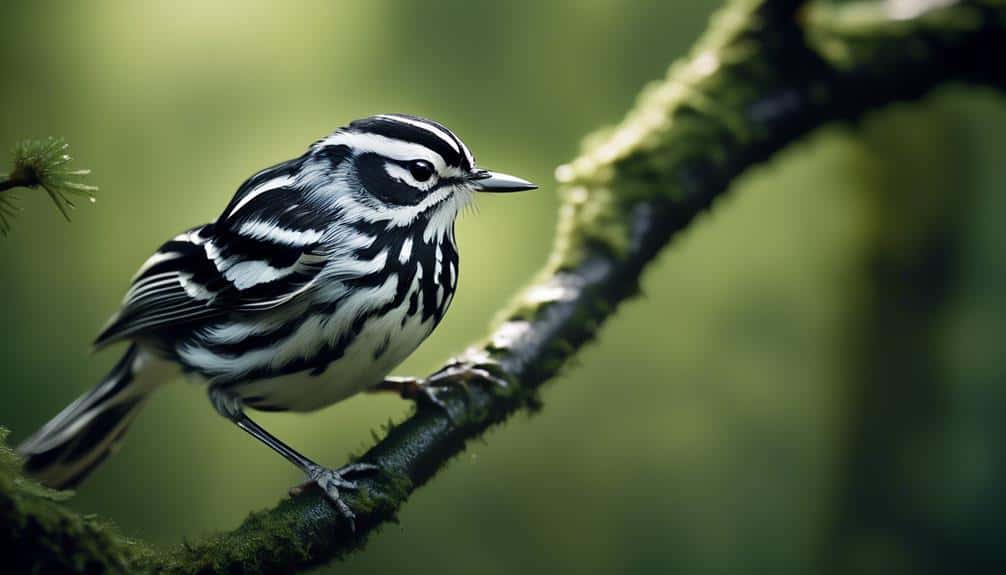
The Black and White Warbler, a migratory species, brings its unique patterned plumage to Michigan’s woodlands during its annual journey. This small, insectivorous bird is known for its distinctive black and white striped plumage, which resembles the bark of trees and provides excellent camouflage. The Black and White Warbler is one of the earliest migrants to arrive in Michigan, typically in late April or early May. Its migratory patterns are fascinating to study as it travels from its wintering grounds in the southern United States and Central America to its breeding grounds in the boreal forests of Canada.
During the breeding season, the Black and White Warbler can be found in Michigan’s mature deciduous and mixed forests. It prefers areas with a dense understory and various tree species, where it can forage for insects and spiders. Unlike many other warbler species, the Black and White Warbler doesn’t build a cup-shaped nest. Instead, it lays its eggs directly on the ground or in tree cavities, abandoned woodpecker holes, or crevices in tree bark. This unique breeding strategy helps protect the eggs from predators.
Downy Woodpecker: Michigan’s Small but Mighty Black and White Bird
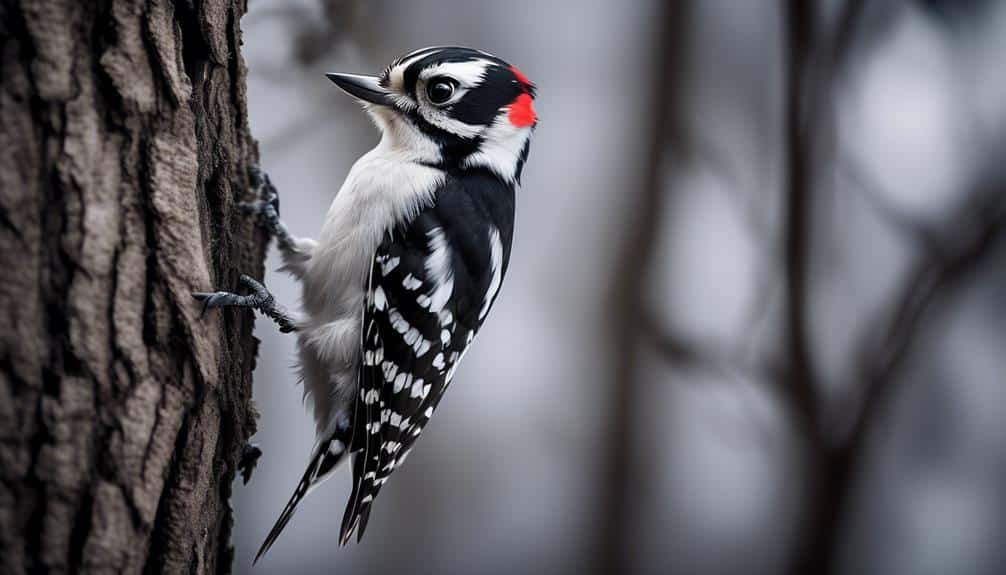
The Downy Woodpecker, a small but powerful black and white bird, is a common resident in Michigan’s forests and woodlands. This fascinating species exhibits unique behaviors and has specific habitat preferences that contribute to its survival and success in the region.
Here are three key aspects of the Downy Woodpecker’s behavior and habitat:
- Foraging Techniques: The Downy Woodpecker is an expert forager, using its strong bill to drum on tree bark and search for insects, larvae, and eggs. It can also extract sap from trees and feed on berries and seeds. This versatile diet allows the Downy Woodpecker to adapt to different food sources throughout the year.
- Nesting Habits: The Downy Woodpecker constructs its nest in dead trees or branches, using its bill to excavate cavities. These nests are often lined with wood chips and have a small entrance hole to protect against predators. The bird displays strong fidelity to its nesting site, often reusing the same cavity for years.
- Preferred Habitat: The Downy Woodpecker thrives in various forested habitats, including deciduous and mixed woodlands. It can also be found in orchards, parks, and suburban areas with suitable trees. This adaptable species prefers habitats with open spaces foraging and mature trees for nesting.
Understanding the behavior and habitat preferences of the Downy Woodpecker is crucial for conserving and supporting this remarkable bird species in Michigan’s diverse ecosystems.
Frequently Asked Questions
What Is the Population Size of Black and White Birds in Michigan?
The population size of black and white birds in Michigan is a topic of interest. As a scientist, I will research to determine the current population and assess the effectiveness of conservation efforts.
How Do Black and White Birds in Michigan Contribute to the Ecosystem?
Black and white birds in Michigan play a crucial role in the ecosystem. They have a significant impact on the local insect population, helping to control pests, and they also contribute to seed dispersal, aiding in the growth and diversity of plant species.
Are There Any Threats or Predators That Black and White Birds in Michigan Face?
Michigan has several threats to black and white birds, including predators such as hawks, owls, and cats. These predators pose a significant risk to the population and can impact the overall ecosystem balance.
What Is the Typical Lifespan of Black and White Birds in Michigan?
The typical lifespan of black and white birds in Michigan varies depending on food availability and predation risk. However, studies have shown that the population size of these birds remains relatively stable over time.
Are Any Conservation Efforts in Place to Protect Black and White Birds in Michigan?
Conservation efforts are in place to protect black and white birds in Michigan. These efforts focus on increasing population size and preserving habitats through various strategies and initiatives.
What Species of Black and White Birds Can Be Found in Michigan?
In Michigan, you can find various species of black and white birds, including the black-capped chickadee, the downy woodpecker, and the black and white warbler. These stunning black and white birds Ohio are a common sight in Michigan’s forests, making them a favorite among birdwatchers in the state.
Conclusion
After observing the black and white birds in Michigan, it’s fascinating to note that the Black-capped Chickadee, Michigan’s iconic songbird, can remember the locations of thousands of food caches.
This remarkable ability showcases their intelligence and adaptability in finding food during harsh winters.
It’s truly awe-inspiring to witness these birds’ intricate behaviors and survival instincts.
Michigan’s diverse avian population, including these black and white beauties, adds to the state’s natural charm and should be cherished and protected.

